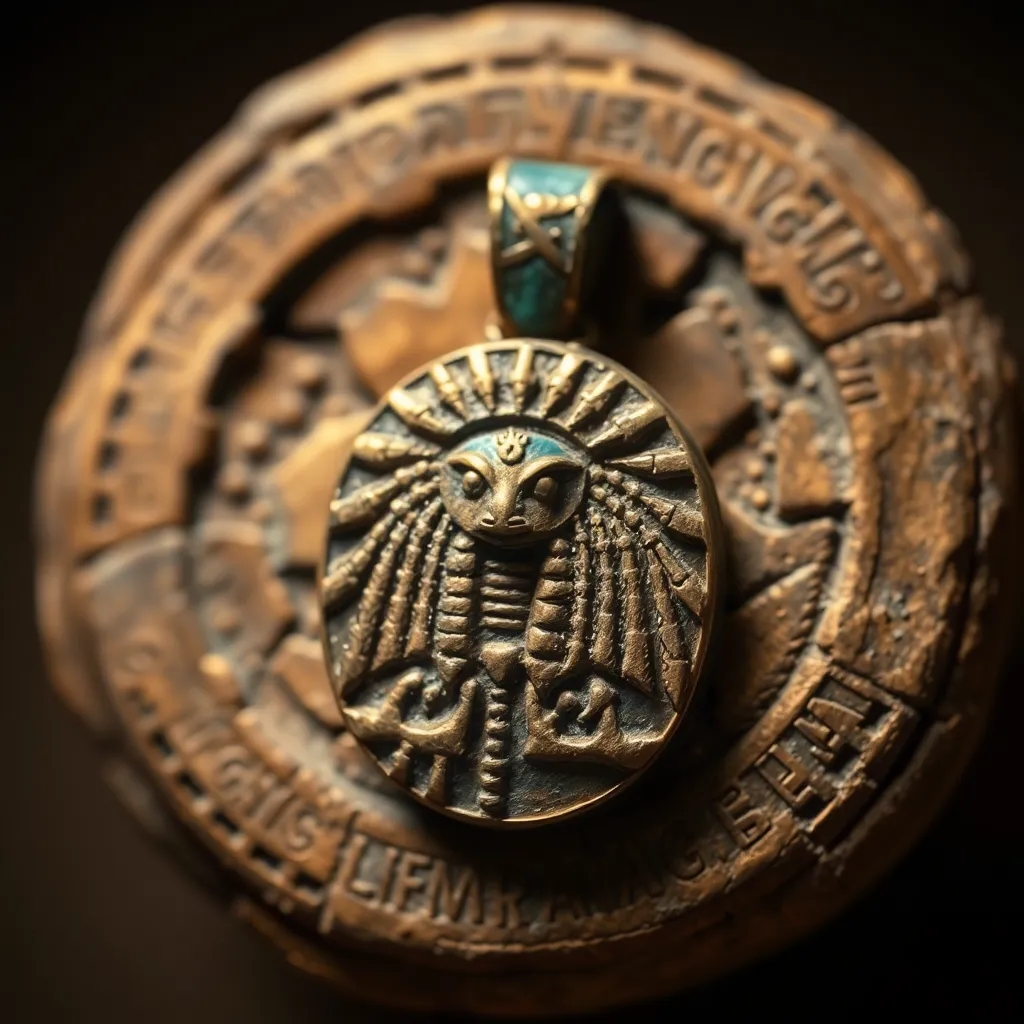The Importance of Amulets in Egyptian Daily Life
I. Introduction
Amulets are small objects, often worn or carried, believed to have protective or magical properties. In Ancient Egyptian culture, amulets held profound significance, serving as symbols of protection, health, and prosperity. This article delves into the multifaceted role of amulets in Ancient Egyptian society, exploring their historical context, types, and their enduring legacy.
II. Historical Context of Amulets in Ancient Egypt
The use of amulets in Ancient Egypt can be traced back to the pre-dynastic period, evolving significantly throughout the various dynasties. They were deeply intertwined with the cultural and religious beliefs of the Egyptians.
A. Origins and evolution of amulet use
The earliest amulets were made from natural materials like stones, shells, and bones. As time progressed, the Egyptians began crafting amulets from metals and glass. The designs and materials used reflected the evolving artistic styles and spiritual beliefs of the time.
B. Cultural and religious influences on amulet creation
Amulets were influenced by the pantheon of Egyptian deities and the prevailing religious beliefs. They were often inscribed with prayers or symbols that invoked divine protection. The rise of specific gods at different historical periods also affected the types of amulets that were popular.
C. The role of amulets in different dynasties
Throughout the Old, Middle, and New Kingdoms, the significance of amulets changed slightly but remained a constant feature in Egyptian life. For instance, during the New Kingdom, the use of amulets became more widespread, with a greater variety of designs reflecting the changing beliefs in the afterlife.
III. Types of Amulets and Their Symbolism
Amulets came in various forms, materials, and symbols, each carrying specific meanings and purposes.
A. Common materials used in amulet crafting
- Stone (e.g., lapis lazuli, turquoise)
- Metal (e.g., gold, bronze)
- Glass and faience
- Wood and ivory
B. Popular shapes and symbols
Some of the most recognizable amulet shapes include:
- Scarabs: Symbolizing rebirth and protection.
- Ankh: Representing life and immortality.
- Eye of Horus: A symbol of protection, health, and restoration.
C. Specific meanings associated with different types of amulets
Each amulet type carried specific meanings, such as:
- Heart Scarab: Placed on the heart of the deceased to ensure a favorable judgment in the afterlife.
- Isis Amulet: Representing motherhood and magic, often used for protection of children.
- Necklace Amulets: Worn by the living for luck and health.
IV. Amulets in Daily Life
In everyday life, amulets served a variety of functions beyond mere ornamentation.
A. Protective functions against evil spirits and misfortune
Many Egyptians believed that amulets could ward off evil spirits and misfortune. They would often wear them during significant life events, such as childbirth or travel.
B. Amulets for health and well-being
Health was a paramount concern, and many amulets were specifically designed to promote physical and spiritual well-being. For instance, amulets depicting deities associated with healing were commonly worn.
C. Use of amulets in personal and family rituals
Amulets were integral to various personal and family rituals, often passed down through generations as a means of ensuring protection and continuity of family legacy.
V. Amulets in the Afterlife
The afterlife was of utmost importance to the Egyptians, and amulets played a critical role in burial practices.
A. Importance of amulets in burial practices
Amulets were placed in tombs with the deceased, believed to provide protection and ensure safe passage to the afterlife.
B. Role of amulets in ensuring safe passage to the afterlife
Specific amulets were believed to assist the dead in navigating the challenges of the afterlife, such as the judgment by Osiris.
C. Examples of amulets found in tombs and their significance
Archaeological discoveries have unearthed numerous amulets in tombs, such as:
- The Scarab Amulet: Frequently found in burial sites, symbolizing rebirth.
- Faience Amulets: Often colorful and intricately designed, representing various deities.
VI. The Crafting and Trade of Amulets
The production and trade of amulets were significant aspects of Ancient Egyptian economy and culture.
A. Artisans and the amulet-making process
Skilled artisans specialized in crafting amulets, often using techniques passed down through generations. The process involved careful selection of materials and intricate designs to imbue the amulets with their intended power.
B. Economic aspects of amulet trade in Ancient Egypt
Amulets were not only personal items but also traded commercially. This trade helped stimulate local economies and fostered artisanship within communities.
C. Influence of amulet demand on local craftsmanship
The consistent demand for amulets led to advancements in craftsmanship, with artisans continually innovating designs and techniques to meet the needs of the market.
VII. Modern Interpretations and Legacy of Egyptian Amulets
The fascination with Egyptian amulets continues in contemporary culture, reflecting their enduring legacy.
A. Revival of interest in amulets in contemporary culture
In recent years, there has been a resurgence of interest in amulets, with many people seeking them for their historical and spiritual significance.
B. Amulets in modern spiritual practices and beliefs
Many modern spiritual practices incorporate the use of amulets, often drawing inspiration from ancient designs and beliefs.
C. The impact of ancient Egyptian amulets on modern jewelry and design
Ancient Egyptian motifs and symbols have heavily influenced contemporary jewelry design, with many artisans crafting pieces inspired by traditional amulet designs.
VIII. Conclusion
Amulets played a crucial role in Ancient Egyptian life, serving as protective symbols, tools for health, and aids in the afterlife. Their significance extends beyond the past, resonating in modern culture and spirituality. The study and appreciation of these ancient artifacts offer profound insights into the beliefs and values of one of history’s most remarkable civilizations.




